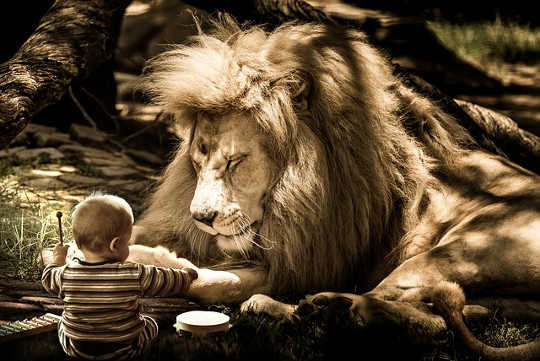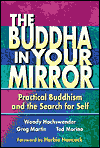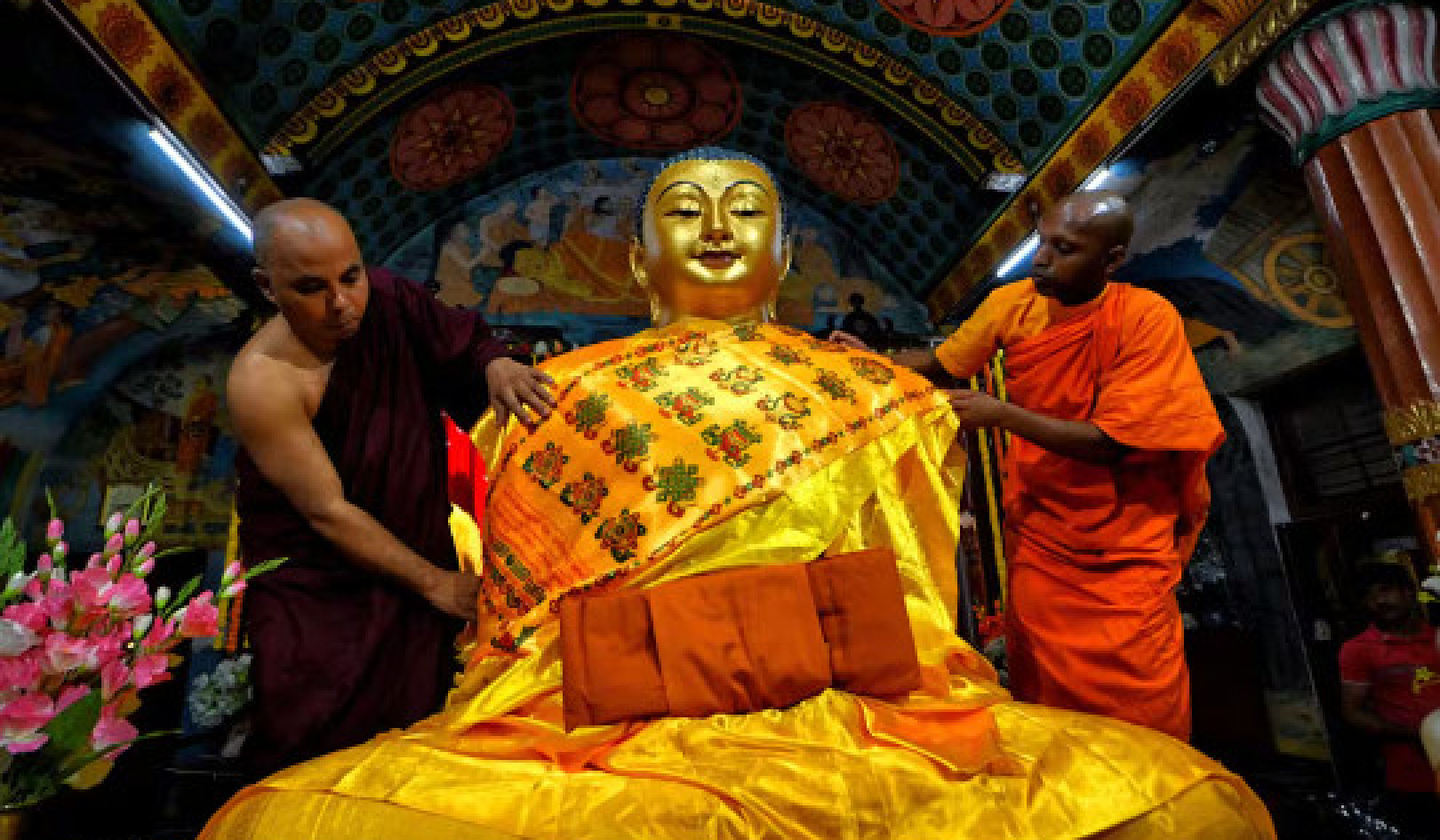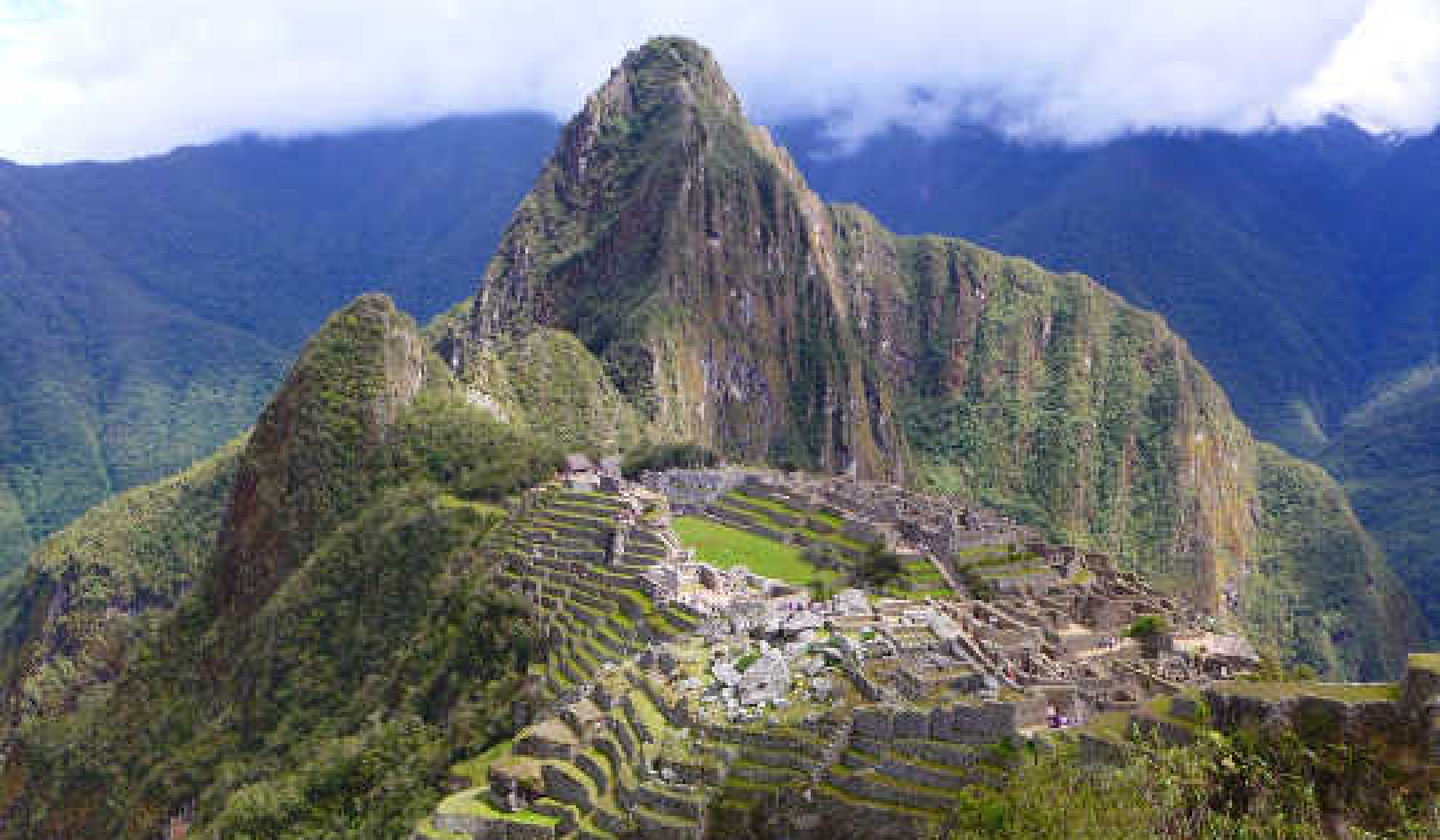
Image by Sarah Richter
Birds sing. The wind blows. The earth turns. Stars flare and die. Galaxies spin gracefully through space. Man is born, lives, grows old and dies. The patterns of existence are mysterious and immeasurable. Who can even begin to comprehend them?
Our mundane daily lives are, in a way, no less complex. Who can always fathom, for example, the needs of a three-year-old child, let alone the inexplicable demands of one's in-laws or one's boss? During a single day, we rejoice at times while we despair at other times.
Our feelings change from moment to moment. Trivial things can make us temporarily happy, while temporary setbacks can make us inexpressibly sad. Worries easily take the place of happiness. Life may be interpreted as a continual battle against problems large and small.
Buddhism Has No Conflict With Science
Never before in the history of the West have so many people turned to the timeless wisdom of Buddhism for answers to the great questions of life as well as to master the problems of daily existence. This is no coincidence, for we live in an age of experimentation and scientific inquiry, and Buddhism has no conflict with the world of science. Indeed, Buddhism has been called "the science of life."
Certainly the images and language of Buddhism have been surfacing with increasing regularity in contemporary culture, from movies and pop songs to magazines and television shows. There is the Buddha of the novel The Buddha of Suburbia, or the dharma of the TV sitcom, Dharma and Greg.
The word karma has entered the Western vernacular and is blithely applied to everything from health-food shakes to nagging relationship problems. Everyone we don't particularly like or understand these days seems to have "bad karma." And there seems to be a Zen to everything, from playing golf to vanquishing your foes at office politics to perhaps even folding your laundry.
Obi Wan Kenobi may not be portrayed as a Buddhist, per se, but his acumen in wielding the metaphysical Force of the epic Star Wars cycle, a mystic power that permeates the universe and ennobles its masters, resembles both the Buddhist concept of "life force" and the legendary powers attributed to the Buddhas in ancient scripture.
What Buddhism Is Not
In the West, Buddhism has long been perceived as an elitist or beatnik religion, something to be discussed over espresso along with radical politics and difficult art. This lasting image perhaps stems from the Beat period of Jack Kerouac's The Dharma Bums, the explanatory books of Alan Watts and countless literary scenes featuring bongos and satori (the Japanese term for enlightenment used particularly in Zen). One could easily gain the impression that Buddhism is primarily a system of intellectual abstraction or a means of escaping from material reality.
For many the overriding popular image of Buddhism is that of an abstruse and impenetrable mystical teaching studied in monkish isolation, the goal of which is inner peace as an end in itself. There is a famous story about the historical Buddha that demonstrates why this view is incorrect.
While walking one day in Deer Park in Benares, India, the Buddha came across a deer lying on the ground. A hunter's arrow had pierced its side. As the deer slowly died, two Brahmans, or holy men, stood over the body arguing over the exact time life leaves the body. Seeing the Buddha and wishing to resolve their debate, they asked his opinion. Ignoring them, the Buddha immediately approached the deer and drew out the arrow, saving the animal's life.
Buddhism Is About Action
If the pop images and adaptations of Buddhism are sometimes offhand and imprecise, they nevertheless point to a surprising truth: The language and wisdom of Buddhism are increasingly being applied to the complexities of modern life because they actually seem to fit.
Buddhist concepts and strategies, as applied to happiness, health, relationships, careers and even the process of aging and dying, pertain to the truth of modern existence -- the actual pulsing reality of life. Buddhist ideas are entering the mainstream because they contain a descriptive power well adapted to the flux and flow of the modern world, without the weight of a dogmatic morality.
Buddhism Explains the Profound Truths Of Life
Buddhism explains the profound truths of life. But it also provides an immensely practical method for overcoming obstacles and transforming oneself. What you learn in these pages can be applied to every area of your existence: family, work, relationships, health. And it can be applied by anyone. That is, each and every human being contains the inherent capacity to be a Buddha, an ancient Indian word meaning "enlightened one," or one who is awakened to the eternal and unchanging truth of life.
By tapping into this vast inner potential, our Buddha nature, we find unlimited resources of wisdom, courage and compassion. Instead of avoiding or fearing our problems, we learn to confront them with joyful vigor, confident in our ability to surmount whatever life throws in our path. This latent potential could be likened to a rosebush in winter -- the flowers are dormant even though we know that the bush contains the potential to bloom.
But on a day-to-day basis, this higher self, this enlightened state, is hidden from view; it is the proverbial "treasure too close to see." This fundamental aspect of the human predicament is illustrated in the Buddhist parable "The Gem in the Robe," as told in the Lotus Sutra. It is the story of a poor man who visits a wealthy friend:
The house was a very prosperous one and [the poor man] was served many trays of delicacies.
The friend took a priceless jewel, sewed it in the lining of the poor man's robe, gave it without a word and then went away, and the man, being asleep, knew nothing of it. After the man had gotten up, he journeyed here and there to other countries, seeking food and clothing to keep himself alive, finding it very difficult to provide for his livelihood. He made do with what little he could get and never hoped for anything finer, unaware that in the lining of his robe he had a priceless jewel.
Later the close friend who had given him the jewel happened to meet the poor man and after sharply rebuking him, showed him the jewel sewed in the robe. When the poor man saw the jewel, his heart was filled with great joy, for he was rich, possessed of wealth and goods sufficient to satisfy the five desires.
We are like that man. This parable depicts the blindness of human beings to the preciousness of their lives and the fundamental life condition of Buddhahood.
Lasting, Sustainable Resolutions To Problems
When we reflect on the lessons of the twentieth century, stained by bloodshed and suffering, we must acknowledge that efforts to reform and restructure the institutions of society, to truly deepen human happiness, have come up short. Buddhism stresses inner, personal transformation as the way to promote lasting, sustainable resolutions to world problems.
So what does it mean to be a Buddha? The word Buddha was a common noun used in India during the lifetime of Shakyamuni, the historical Buddha. This is an important point in the sense that enlightenment is not regarded as the exclusive province of one individual.
The Buddhist sutras talk of the existence of Buddhas other than Shakyamuni. In a sense, then, Buddhism comprises not only the teaching of the Buddha but also the teaching that enables all people to become Buddhas.
Reprinted with permission of the publisher,
Middleway Press, a division of the SGI-USA. ©2001.
www.middlewaypress.org
Article Source
The Buddha in Your Mirror: Practical Buddhism and the Search for Self
by Woody Hochswender, Greg Martin & Ted Morino.
W hile the notion that “happiness can be found within oneself” has recently become popular, Buddhism has taught for thousands of years that every person is a Buddha, or enlightened being, and has the potential for true and lasting happiness. Through real-life examples, the authors explain how adopting this outlook has positive effects on one’s health, relationships, and career, and gives new insights into world environmental concerns, peace issues, and other major social problems.
hile the notion that “happiness can be found within oneself” has recently become popular, Buddhism has taught for thousands of years that every person is a Buddha, or enlightened being, and has the potential for true and lasting happiness. Through real-life examples, the authors explain how adopting this outlook has positive effects on one’s health, relationships, and career, and gives new insights into world environmental concerns, peace issues, and other major social problems.
Info/Order this paperback book and/or download the Kindle edition.
About the Authors
WOODY HOCHSWENDER is a former reporter for the New York Times and a former senior editor at Esquire magazine. He has been practicing Nichiren Buddhism for more than 25 years. He has written two previous books and numerous magazine articles on various topics.
GREG MARTIN is a vice general director of the SGI-USA, the lay organization of Nichiren Buddhists in the United States. He has written and lectured on Nichiren Buddhism for much of his 30 years of practice and holds a professorship within the SGI-USA's Study Department.
TED MORINO is a vice general director of the SGI-USA and is currently editor-in-chief of the organization's weekly newspaper and monthly magazine. He has led the translation efforts for numerous books and articles on Nichiren Buddhism and has written and lectured extensively on the topic for much of the past 30 years. He is the former head of the SGI-USA's study department.

























